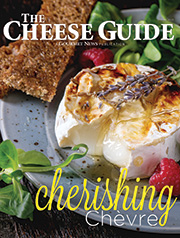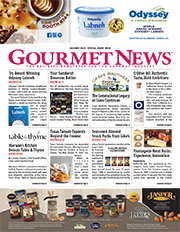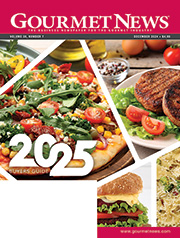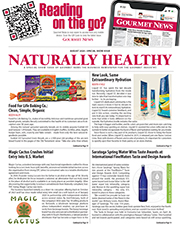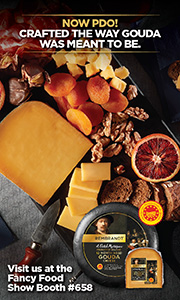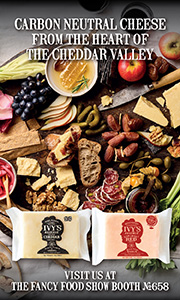
Starbucks Outlines Reusable Cup, Recycle App, EV Route Plans
Starbucks has outlined efforts to reduce waste through innovative reusable cup programs, launched a waste and recycling app to support partners’ sustainability efforts and a pilot program with Volvo to help electrify a driving route from the Colorado Rockies to Seattle.
“We have a bold long-term sustainability vision and ambitious goals for 2030,” said Starbucks president and CEO, Kevin Johnson. “Starbucks partners around the world are passionate about protecting our planet and are at the very center of driving the innovation that enables us to give more than we take from the planet.”
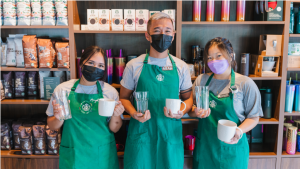 To help reach the company’s goal of reducing waste by 50 percent by 2030, Starbucks is shifting away from single-use plastics and piloting reusable cup programs in six markets around the world. By the end of next year, customers will be able to use their own personal reusable cup for every Starbucks visit in the U.S. and Canada – including in café, drive-thru and mobile order and pay. The goal, by 2025, is to create a cultural movement toward reusables by giving customers easy access to a personal or Starbucks provided reusable to-go cup for every visit.
To help reach the company’s goal of reducing waste by 50 percent by 2030, Starbucks is shifting away from single-use plastics and piloting reusable cup programs in six markets around the world. By the end of next year, customers will be able to use their own personal reusable cup for every Starbucks visit in the U.S. and Canada – including in café, drive-thru and mobile order and pay. The goal, by 2025, is to create a cultural movement toward reusables by giving customers easy access to a personal or Starbucks provided reusable to-go cup for every visit.
Starbucks continues to test multiple “Borrow-A-Cup” and reusable operating models in the United States, United Kingdom, Japan and Singapore, with more countries in the year ahead. In addition, the company continues to encourage customers to bring their own cup and to emphasize for-here-ware as the default sit-and-stay experience, while exploring new customer incentives and technologies, such as cup washing stations at café counters.
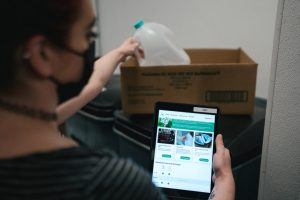 The company is also launching a new Starbucks Partner Waste and Recycling App, developed by partners as part of the Greener Stores Innovation Challenge, to help partners navigate complex and unique store recycling guidelines. The app puts everything partners need to know to reduce waste and recycle in one place; it features store specific information and notifications, a sorting guide and the option to create store specific signage for partners and customers.
The company is also launching a new Starbucks Partner Waste and Recycling App, developed by partners as part of the Greener Stores Innovation Challenge, to help partners navigate complex and unique store recycling guidelines. The app puts everything partners need to know to reduce waste and recycle in one place; it features store specific information and notifications, a sorting guide and the option to create store specific signage for partners and customers.
“Starbucks is spending this year testing innovative new ways to reduce waste and reduce our carbon footprint,” said Michael Kobori, chief sustainability officer. “Some of our best innovations, like the Waste and Recycling App, come directly from our store partners. Our store partners know their customers and communities best. When we work together with our partners, we find better solutions to create a more sustainable future for our planet and people.”
In addition, Starbucks continues to rapidly expand its roster of renewable energy and decarbonization projects in the United States, including a new pilot program with Volvo Cars to electrify the driving route from the Colorado Rockies to the Starbucks Support Center in Seattle, providing a string of familiar, reliable, clean and safe places to recharge themselves and their battery-powered vehicles.
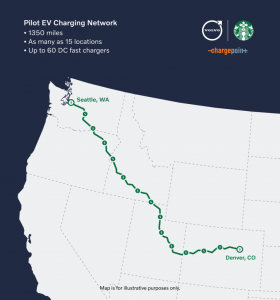 By the end of 2022, Volvo-branded electric vehicle chargers, powered by ChargePoint, will be available at up to 15 Starbucks stores along a 1,350-mile route from the Denver area to the coffee company’s Seattle headquarters, as part of the company’s 2,700 Greener Store portfolio. These DC Fast Chargers will be placed at Starbucks stores about every 100 miles, adding much-needed peace of mind for EV drivers, who we know see today’s limited charging infrastructure as a major barrier to purchase. While customer’s cars are recharging outside, drivers can relax comfortably inside with their favorite Starbucks beverage.
By the end of 2022, Volvo-branded electric vehicle chargers, powered by ChargePoint, will be available at up to 15 Starbucks stores along a 1,350-mile route from the Denver area to the coffee company’s Seattle headquarters, as part of the company’s 2,700 Greener Store portfolio. These DC Fast Chargers will be placed at Starbucks stores about every 100 miles, adding much-needed peace of mind for EV drivers, who we know see today’s limited charging infrastructure as a major barrier to purchase. While customer’s cars are recharging outside, drivers can relax comfortably inside with their favorite Starbucks beverage.
By 2030, Starbucks aspires to lead the retail industry in decarbonization solutions, including Electric Vehicle charging and onsite solar availability at stores and in adjacent locations. Starbucks plans to continue expanding its solar pilot locations to 55 new stores this year.
Gourmet News reports leading companies in corporate responsibility. Subscribe now so you don’t miss anything!
Goya Delivers Food, Rosaries for Ukraine Relief
What started as a mission to nourish the body, has turned into a mission of nourishing the soul to bring peace and prayer to the people of Ukraine. Goya arrived in Poland to distribute more than 15,000 rosaries that were donated by Americans from around the country for Ukraine relief.
A hand-written letter with a request for rosaries from the Dominican priests in Ukraine was sent just as the Goya team arrived in Poland with the 15,000 rosaries; 7,500 rosaries were delivered into Ukraine.
The Goya team was led to go to the Ukraine border in Hrebenne by the Dominican priests and Our Lady of Mercy Sisters to the Knights of Columbus Mercy Hut Welcome Center, where a temporary chapel has been set up to distribute the rosaries.
On March 18, the third phase of Goya’s humanitarian and now spiritual mission brought the Goya team to Częstochowa, the spiritual capital of Poland, where a globally televised Holy Mass was celebrated by Archbishop of Częstochowa Waclaw Depo at the National Shrine of Our Lady of Częstochowa. The Archbishop joined the Vatican and Pope Francis’ call for prayer and world peace.
Is your specialty foods company involved in sending Ukraine relief? Please email Gourmet News Senior Editor A.J. Flick, aj_f@oser.com, and let us know!
Coors Light Chillollipops – Yes, Beer-Flavored Lollipops – May Calm March Madness
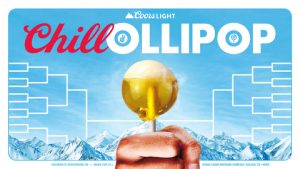 During the three weeks of nail-biting basketball games, stressed out sports fans watch as their favorite college b-ball teams advance to the next round or while their brackets are busted. Either way, Coors Light thought fans could use a little chill in a new form of “Chillollipop,” beer-flavored lollipops.
During the three weeks of nail-biting basketball games, stressed out sports fans watch as their favorite college b-ball teams advance to the next round or while their brackets are busted. Either way, Coors Light thought fans could use a little chill in a new form of “Chillollipop,” beer-flavored lollipops.
Why lollipops? The brand was inspired to try a social experiment of its own to test the effectiveness of the Coors Light Chillollipop after reading about previous social experiments where lollipops and hard candies were distributed to club and bar goers at the end of the evening to calm them down.
Coors Light enlisted the advice of Manhattan College professor, Donald E. Gibson, Ph.D., who weighed in on the charged state sports fans experience while watching games.
“Emotions are contagious,” said Gibson. “If there are strong emotions around us, it’s very easy to be swept up in them. I believe that something as simple as a lollipop could have a calming influence in an emotionally charged situation.”
“March is one of the most stressful times of the year for a college basketball fan,” said Marcelo Pascoa, vice president of marketing for the Coors Family of Brands. “During all the incredible highs and lows of March basketball, Coors Light is the brand to bring a moment of chill. Whether in the form of a Chillollipop to bring the calm, or a mountain-cold Coors Light to refresh spirits.”
The lollipop, intended for consumers 21+ and crafted to taste similar to Coors Light, does not contain alcohol, but does have a frothy foam top, similar to the experience of drinking a Coors Light from a pint.
“Will it work? We don’t know, but we can’t imagine anyone has ever been unhappy or angry with a lollipop in their mouth, so we wanted to give the Coors Light Chillollipop experiment a try,” Pascoa said.
Through the end of the tournament, Coors Light Chillollipops will be sold in 6-packs at shop.coorslight.com for $3.17, a nod to the first day of the tournament.
The brand brought its new Chillollipops to bars across New York City to test if it’s beer-flavored lollipops brought the chill to amped-up basketball fans as they watched conference tournaments. View some of the early results in this short film.
Consumers are invited to share their results of the social experiment on Coors Light’s Instagram @coorslight and Twitter @coorslight.
For more updates on the specialty news industry, subscribe to Gourmet News.
